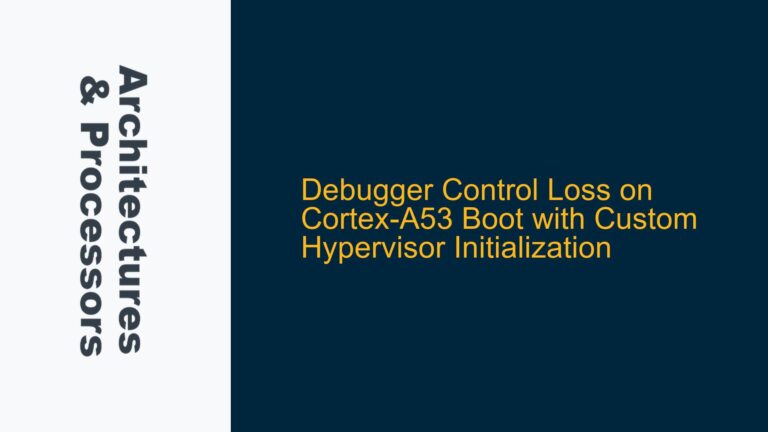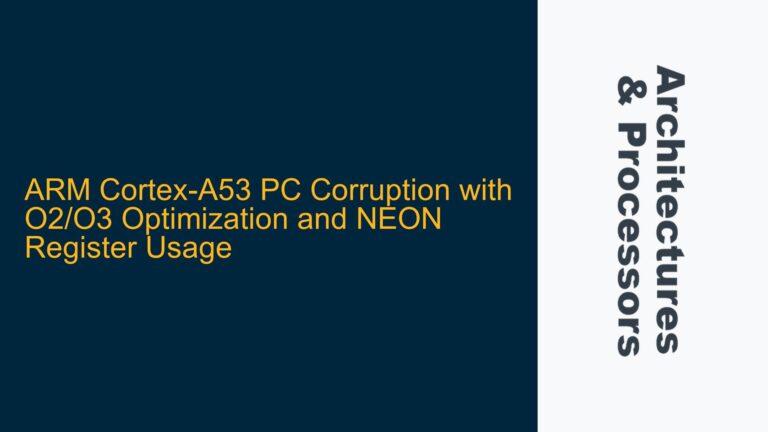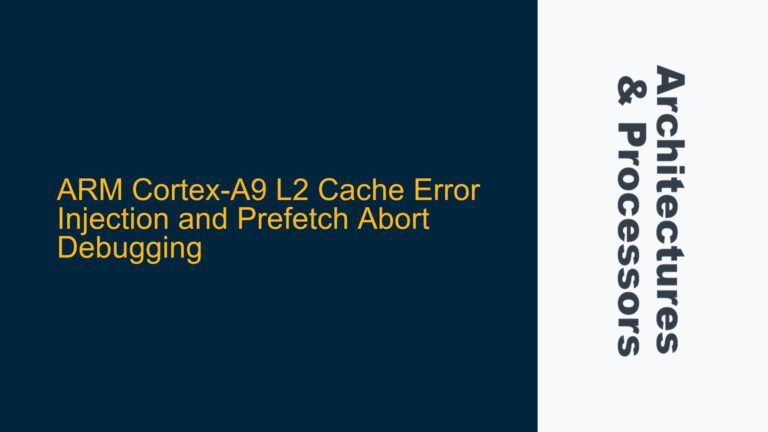ARM Cortex-M4 FFT Frequency Resolution Limitations in Noisy Environments
When working with noisy or distorted signals, accurately determining the dominant frequency using Fast Fourier Transform (FFT) on ARM Cortex-M4 processors can be challenging. The primary issue arises from the inherent limitations of FFT frequency resolution, which is determined by the sampling rate and the number of samples. For instance, when sampling a 50Hz signal at 3kHz with a 4096-point FFT, the frequency resolution is approximately 1.5Hz per bin. This resolution is insufficient for applications requiring high precision, such as power grid frequency monitoring, where 0.1Hz accuracy is often necessary.
The problem is exacerbated by the presence of noise and harmonics, which can distort the signal and spread energy across multiple frequency bins. Traditional methods like zero-crossing detection become unreliable in such scenarios. Even advanced techniques like weighted averaging of adjacent bins may not yield the desired accuracy. Lowering the sampling rate to improve resolution is not a viable solution either, as it significantly increases the measurement time, making real-time monitoring impractical.
Insufficient Frequency Resolution and Noise-Induced Bin Spreading
The core issue stems from two interrelated factors: insufficient frequency resolution and noise-induced bin spreading. The frequency resolution of an FFT is given by the formula:
[ \text{Frequency Resolution} = \frac{\text{Sampling Rate}}{\text{Number of Samples}} ]
For a 3kHz sampling rate and 4096 samples, the resolution is approximately 1.5Hz. This means that the FFT can only distinguish frequencies that are at least 1.5Hz apart. When the signal is noisy or contains harmonics, the energy of the dominant frequency can spread across multiple bins, making it difficult to pinpoint the exact frequency.
Another contributing factor is the choice of windowing function. While the Hanning window is effective in reducing spectral leakage, it also broadens the main lobe of the frequency response, further reducing the ability to distinguish closely spaced frequencies. This broadening effect is particularly problematic when the signal-to-noise ratio (SNR) is low, as the noise can obscure the true peak of the dominant frequency.
Enhancing Frequency Measurement Accuracy with Advanced Signal Processing Techniques
To achieve the required 0.1Hz accuracy in noisy environments, a combination of advanced signal processing techniques must be employed. These techniques include interpolation, phase-based frequency estimation, and adaptive filtering.
Interpolation for Enhanced Frequency Resolution
Interpolation can be used to estimate the true frequency with higher precision than the FFT bin resolution. One common method is the quadratic interpolation, which fits a parabola to the three highest bins around the peak. The peak of the parabola provides a more accurate estimate of the true frequency. The formula for quadratic interpolation is:
[ f_{\text{peak}} = f_{\text{bin}} + \frac{\Delta f}{2} \cdot \frac{y_{n+1} – y_{n-1}}{2y_n – y_{n-1} – y_{n+1}} ]
where ( f_{\text{bin}} ) is the frequency of the highest bin, ( \Delta f ) is the frequency resolution, and ( y_{n-1} ), ( y_n ), and ( y_{n+1} ) are the magnitudes of the bins adjacent to the peak.
Phase-Based Frequency Estimation
Phase-based frequency estimation leverages the phase information from the FFT to refine the frequency estimate. The phase difference between two consecutive FFT frames can be used to estimate the frequency offset within a bin. This method is particularly effective when the signal is relatively stable over the measurement interval. The phase difference ( \Delta \phi ) can be converted to a frequency offset ( \Delta f ) using the formula:
[ \Delta f = \frac{\Delta \phi}{2\pi T} ]
where ( T ) is the time interval between the two FFT frames.
Adaptive Filtering for Noise Reduction
Adaptive filtering can be employed to reduce the impact of noise and harmonics on the frequency measurement. An adaptive filter adjusts its coefficients in real-time to minimize the noise component in the signal. One common approach is to use a Least Mean Squares (LMS) adaptive filter, which iteratively adjusts the filter coefficients to minimize the mean square error between the desired signal and the filter output. The LMS algorithm is computationally efficient and well-suited for real-time implementation on ARM Cortex-M4 processors.
Practical Implementation on ARM Cortex-M4
Implementing these techniques on an ARM Cortex-M4 processor requires careful consideration of the available computational resources. The CMSIS-DSP library provides optimized functions for FFT, interpolation, and filtering, which can be leveraged to achieve real-time performance. Below is a step-by-step guide to implementing the enhanced frequency measurement:
-
Sampling and Windowing: Acquire 4096 samples of the signal at a 3kHz sampling rate. Apply a Hanning window to the samples to reduce spectral leakage.
-
FFT Computation: Use the
arm_rfft_q15()function from the CMSIS-DSP library to compute the FFT of the windowed samples. This function is optimized for fixed-point arithmetic and provides efficient computation on ARM Cortex-M4 processors. -
Peak Detection: Identify the bin with the highest magnitude. This bin corresponds to the coarse estimate of the dominant frequency.
-
Quadratic Interpolation: Apply quadratic interpolation to the three highest bins around the peak to refine the frequency estimate. Use the formula provided earlier to calculate the interpolated frequency.
-
Phase-Based Frequency Estimation: Compute the phase difference between two consecutive FFT frames to estimate the frequency offset within the bin. Convert the phase difference to a frequency offset using the phase-based frequency estimation formula.
-
Adaptive Filtering: Implement an LMS adaptive filter to reduce noise and harmonics. Update the filter coefficients in real-time to minimize the mean square error between the desired signal and the filter output.
-
Final Frequency Calculation: Combine the interpolated frequency estimate with the phase-based frequency offset to obtain the final frequency measurement with 0.1Hz accuracy.
Example Code Snippet
Below is an example code snippet demonstrating the implementation of the above steps using the CMSIS-DSP library:
#include "arm_math.h"
#include "arm_const_structs.h"
#define FFT_SIZE 4096
#define SAMPLE_RATE 3000
#define BIN_RESOLUTION ((float)SAMPLE_RATE / FFT_SIZE)
void measure_frequency(float32_t *samples, float32_t *frequency) {
float32_t fft_output[FFT_SIZE];
float32_t windowed_samples[FFT_SIZE];
float32_t magnitudes[FFT_SIZE / 2];
float32_t max_magnitude = 0;
uint32_t max_bin = 0;
float32_t interpolated_frequency;
float32_t phase_offset;
float32_t final_frequency;
// Apply Hanning window
arm_mult_f32(samples, hanning_window, windowed_samples, FFT_SIZE);
// Compute FFT
arm_rfft_fast_instance_f32 fft_instance;
arm_rfft_fast_init_f32(&fft_instance, FFT_SIZE);
arm_rfft_fast_f32(&fft_instance, windowed_samples, fft_output, 0);
// Compute magnitudes
arm_cmplx_mag_f32(fft_output, magnitudes, FFT_SIZE / 2);
// Find peak bin
arm_max_f32(magnitudes, FFT_SIZE / 2, &max_magnitude, &max_bin);
// Quadratic interpolation
float32_t y0 = magnitudes[max_bin - 1];
float32_t y1 = magnitudes[max_bin];
float32_t y2 = magnitudes[max_bin + 1];
float32_t delta = (y2 - y0) / (2 * (2 * y1 - y0 - y2));
interpolated_frequency = (max_bin + delta) * BIN_RESOLUTION;
// Phase-based frequency estimation
float32_t phase0 = atan2f(fft_output[2 * (max_bin - 1) + 1], fft_output[2 * (max_bin - 1)]);
float32_t phase1 = atan2f(fft_output[2 * max_bin + 1], fft_output[2 * max_bin]);
phase_offset = (phase1 - phase0) / (2 * M_PI * (1.0 / SAMPLE_RATE));
// Final frequency calculation
final_frequency = interpolated_frequency + phase_offset;
*frequency = final_frequency;
}
Conclusion
Accurately measuring the frequency of noisy or distorted signals on ARM Cortex-M4 processors requires a combination of advanced signal processing techniques. By leveraging interpolation, phase-based frequency estimation, and adaptive filtering, it is possible to achieve the desired 0.1Hz accuracy without significantly increasing the measurement time. The CMSIS-DSP library provides optimized functions that facilitate the implementation of these techniques, making it feasible to achieve real-time performance on resource-constrained embedded systems.
By following the steps outlined in this guide, engineers can overcome the limitations of FFT frequency resolution and achieve precise frequency measurements in challenging environments. This approach not only improves the accuracy of frequency measurements but also enhances the overall reliability of embedded systems operating in noisy conditions.






